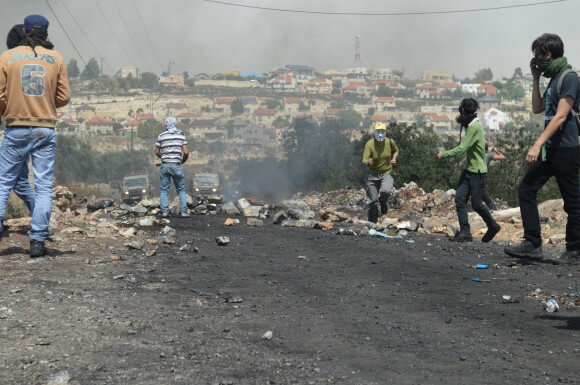
As Israel clamps down on cities, towns, and villages in the occupied West Bank this week in response to three missing young settlers, one village has experienced similar tactics for over a decade. Nestled in the hills of the occupied West Bank near the city of Nablus lies the village of Kufr Qaddum. The village, which houses a population of approximately 4,000, is set in picturesque surroundings, however every Friday the landscape is engulfed in a thick cloud of black smoke.
Since 2003 the Israeli army has blockaded the road from Kufr Qaddum to Nablus, cutting off the village’s lifeline to its main economic and social hub. The army’s justification for this action is securing the internationally deemed illegal settlement of Kedumim, which sits atop a hill looking over Kufr Qaddum. The road runs close by, so in a predictable, albeit devastating, move by the military Palestinians were forbidden and blocked from using it.
Since 2011, the villagers have fought back in an attempt to end the siege on Kufr Qaddum.
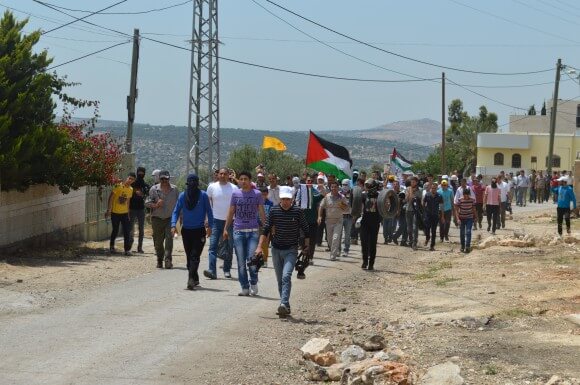
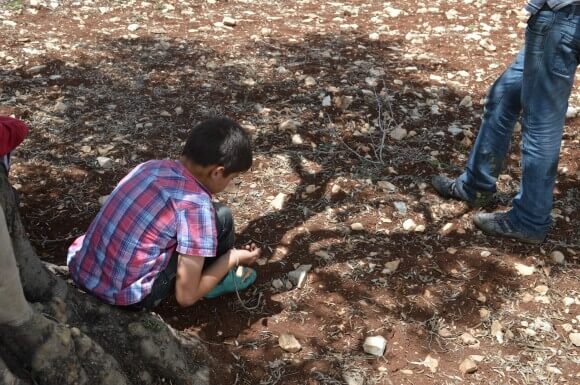
Like many other villages up and down the West Bank, Friday has become a day of protest and resistance. However unlike several of these villages that have gained international media attention, such as Bil’in and Nabi Saleh, Kufr Qaddum remains relatively unknown, even within the West Bank. Yet resistance in the village is fierce— involving face to face encounters with armed soldiers, military jeeps and bulldozers, on the very road that villagers have been forbidden to use. And in a bizarre twist it is the villagers who set up road blocks of rocks and burning tires in order to stop the army from getting into the village when they inevitably have to retreat.
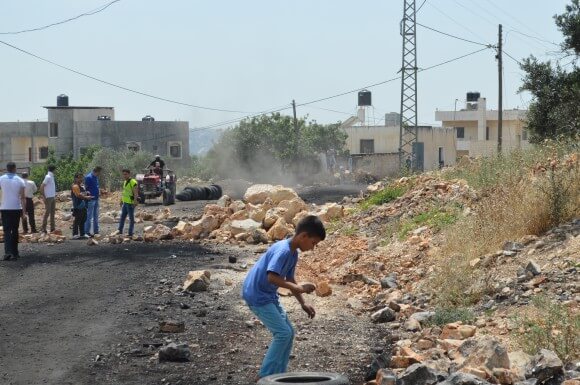
For the young boys who pile up the tires and set them alight, their action has two significant points. The thick clouds of black smoke ensure that the army cannot see protestors so easily, creating a form of protection from fully armed soldiers. The burning of tires also acts as a form of civil disobedience towards the settlement Kedumim. Due to the topography of the area, the wind naturally blows the smoke in the settlement’s direction.
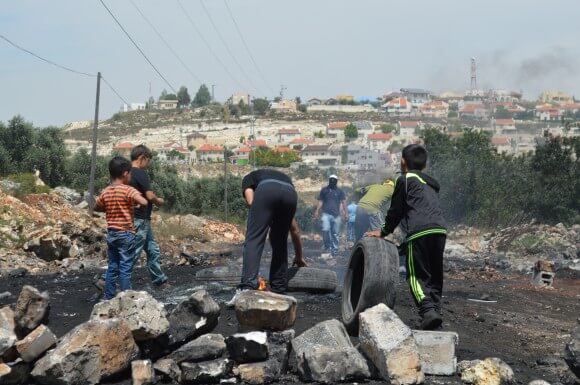
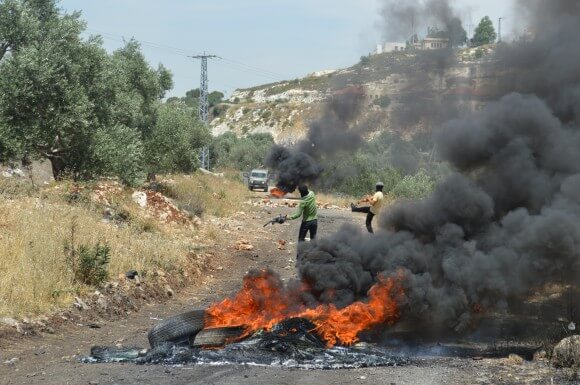
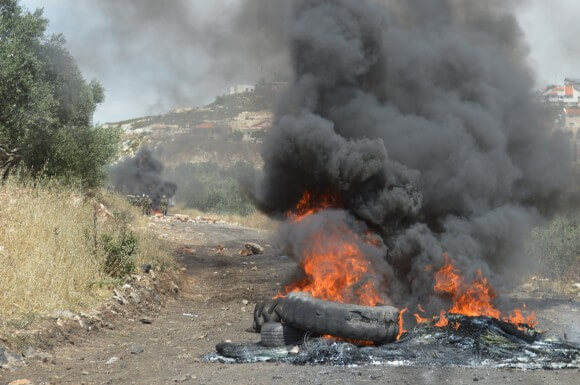
Black soot now saturates all the roads of the village, remnants of three years of resistance. The air on a Friday is heavy with smoke and tear gas, and many shabaab, the village’s youth at the frontline, carry gas masks. This frontline is often 50 meters or more from the main bulk of the protestors. Made up in general of around ten of the village’s bravest young men who get close enough to the advancing army that the soldiers are within slingshot range. Doing so involves many risks, including being shot by rubber coated steel bullets and/or live ammunition.
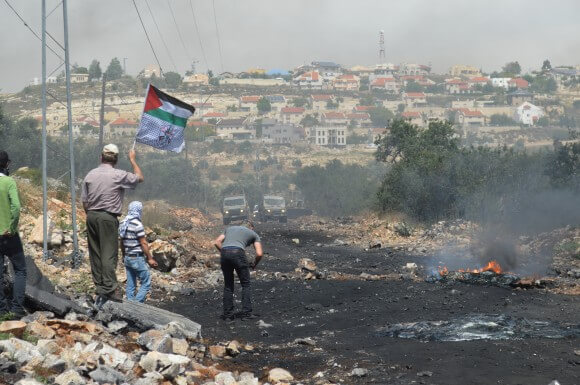
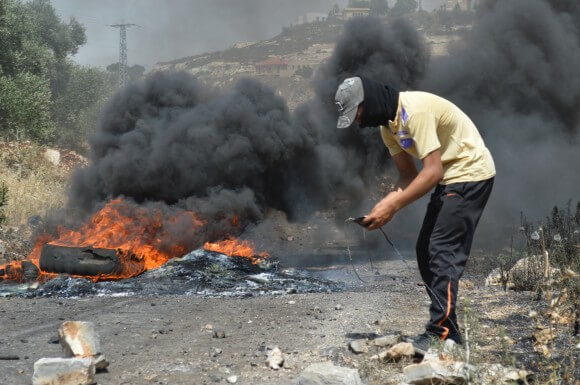
The worry for many is not necessarily when army jeeps advance, after all makeshift roadblocks have been set up in a direct mirroring of what the army has done to the people of Kufr Qaddum. Panic ensues when the jeeps suddenly stop and soldiers step out with loaded guns in tow, causing protestors to turn around swiftly and run back towards the village. The black smoke helps to conceal individuals from army view, but each makeshift roadblock also poses problems in the scramble to retreat.
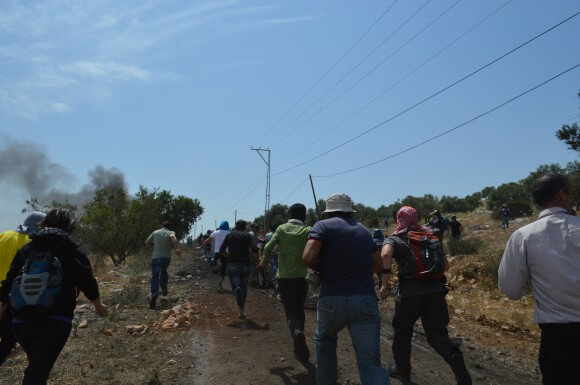
Every Friday the cycle of violent clashes between the villagers and the army continues. For villagers, such as Kamal al-Qaddoumi, this is necessary. “Some of us study in Nablus, some of us work and have family there.” Al-Qaddoumi said. “They [the army] try to make our lives as hard as possible by cutting our village off and we must resist this, we must show we are still here and we will not give up our right to live here despite the dangers we face”


My wishes for Victory and Justice are with the people of Kufr Qaddum as they face the evil forces arrayed against them. May their fight for freedom prevail soon!
Zio-supremacist Jews steal, occupy and colonize land in Palestine (i.e., outside of the (Partition) borders of their state).
Other Zio-supremacist Jews enforce these acts of theft, occupation and colonization in Palestine.
And Zio-supremacists everywhere applaud the immorality and injustice of it all, and blame the Palestinians for the (war) crimes of their Zio-supremacist co-collectivists.